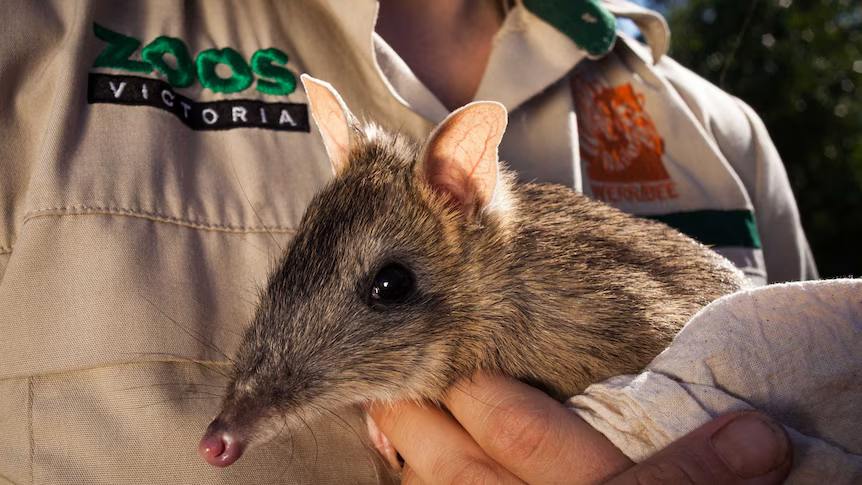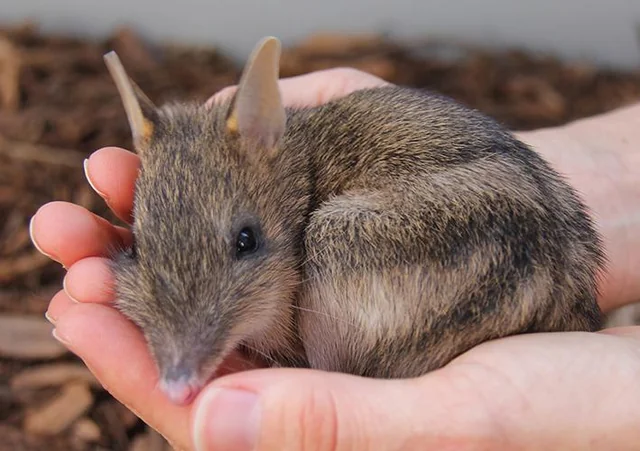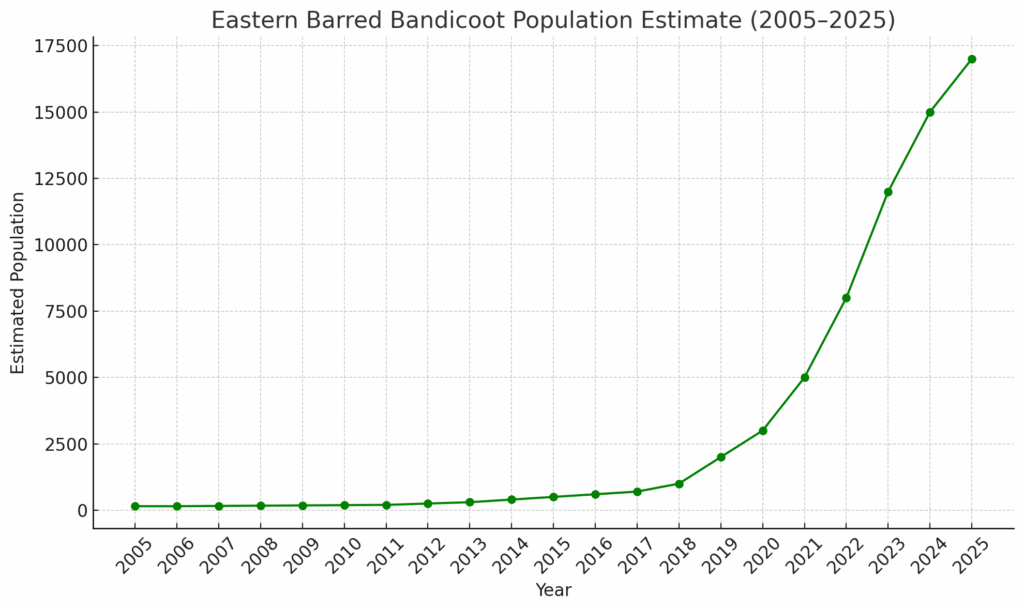Part 2 Local threatened Species
Eastern Barred Bandicoot


Species Identification
Common Name: Eastern Barred Bandicoot
Scientific Name: Perameles gunnii
Diet and Habitat Requirements
Diet: The eastern barred bandicoot diet consists mainly of small insects like beetles, crickets, grass hoppers, moths, earthworms and sometimes they eat plants and other things like fruit.
Habitat: The Eastern Barred Bandicoot prefers grasslands and forests with a dense ground cover, this includes areas with native vegetation and weeds like gorse and blackberrys.
Limitations: Due to requiring areas with significant ground covering when droughts take place or even just extended dry periods it can cause a significant decline in population.

Conservation Status – And what does it mean?
Status: Vulnerable
Vulnerable is when a species is facing a high risk of extinction in the wild but not as immediate as endangered species
The IUCN (International Union for Conservation of Nature) have done an assessment on the Eastern Barred Bandicoot and concluded that the current status of the bandicoot is Vulnerable. The status of the Bandicoot has continued to go up since going completely Extinct In The Wild in 2013.
This species still faces high risk of extinction due to suspected population size reduction.

Major Threats
Some threats to the bandicoot include:
Habitat loss: Over 99% of the native grasslands have been lost in Victoria, the reason for this is farming and other agricultural use – big areas cleared out for growing crops or raising cattle
Predator increase: The biggest killers of the Bandicoot are not native animals – they are introduced predators that are not native to Australia. The two main killers are Red foxes and Feral cats. Foxes and Feral cats are such threats to the bandicoot because the bandicoots are active at night, slow and small which makes them an easy target.
How Its Being Managed – The main ways this threats are being controlled is through Predator free reserves which have high fences to keep the foxes and cats out. And a less used way is through migrating some of the bandicoots to islands like Philip Island which is completely free of these predators. And in some cases they capture the predators and move them.

Conservation Strategies
Currently there are multiple Conservation Strategies taking place in order to help the Eastern Barred Bandicoot a few of these include:
Captive Breeding Programs – These programs are established in order to prevent extinction by ensuring that the species continue to have off spring preventing extinction and used to then reintroduce species into the wild. – Captive breeding helps as natural populations are to small to recover with out help from humans
Predator Control – Implementing of fox free reserve with predator-proof fencing to protect reintroduced predators coming from Captive Breeding Programs. – protects the vulnerable native species from being hunted by introduced species they otherwise would not be able to defend themselves against.
These strategies in place address the main threats the Eastern Barred bandicoot face of predation and habitat loss aiming to stabilise and increase the population.